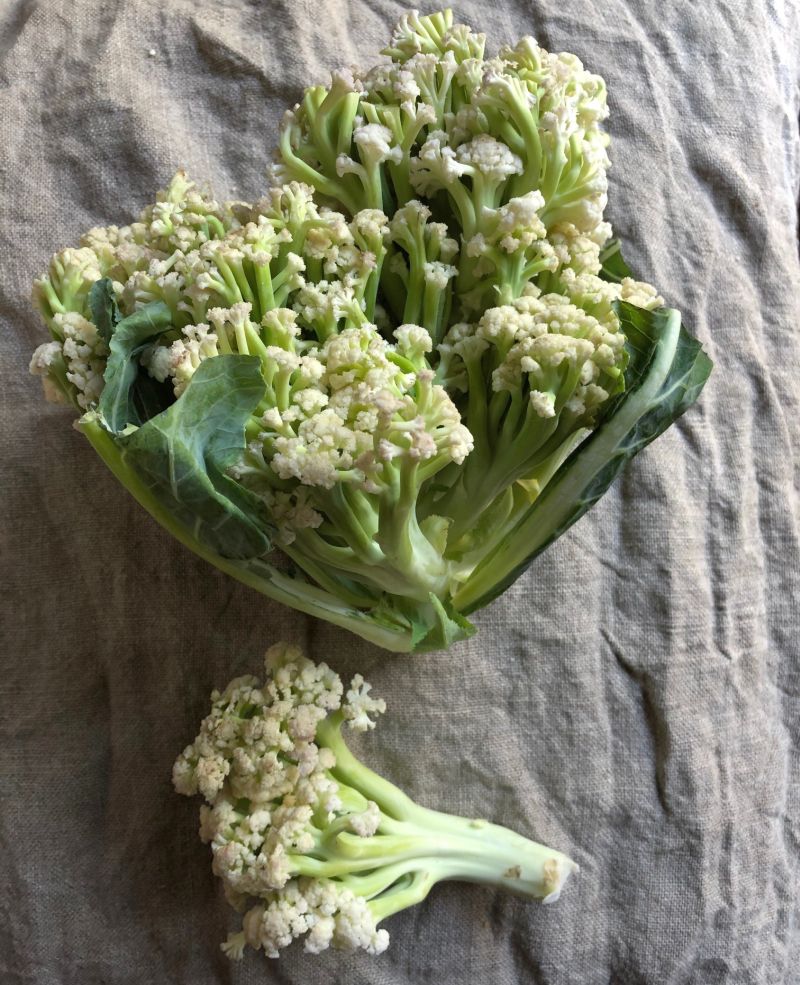
It looks like an overgrown cauliflower, a head that has rogue, or somehow gotten electrocuted. When I first spotted flowering cauliflower at a Chinese market in the San Gabriel Valley, I took it for a one-off, an outlier. But it was being sold at a normal price, not a discount super special deal, despite the signage. Nevertheless, it seemed like a novelty.
Then I saw the flowering cauliflower again in San Francisco’s Chinatown at a greengrocer. My friend, Andrew Janjigian, senior editor at Cook’s Illustrated, mumbled about having seen it back East but he hadn’t tried it. We both thought it looked weird but interesting.
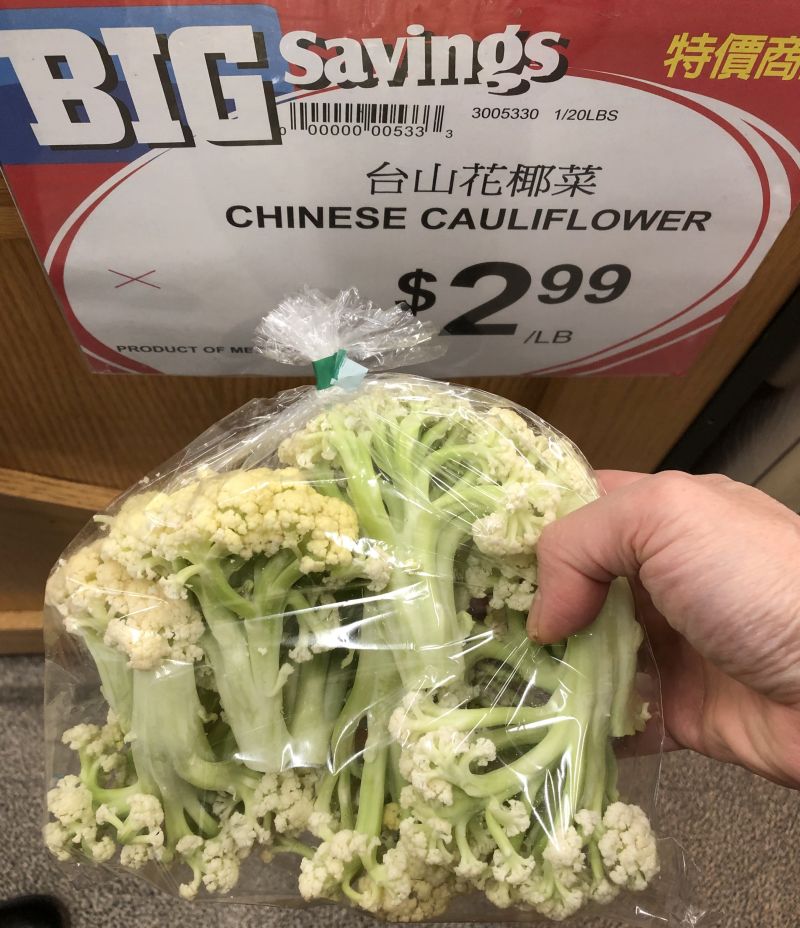
When I was in Boston, I spotted the flowering cauliflower again – this time at the Cambridge, Massachusetts Avenue, location of H Mart, a Korean market chain. Three sightings, on both coasts in March, April and May. Last Sunday, when I saw the cauliflower at Lion Market in San Jose, I decided it was time to get some to check it out. It was obviously trending.
What is Flowering Cauliflower?
When I cut apart the clusters, the flowering cauliflower looked like Dr. Seuss had created it. At the Asian markets, the flowering cauliflower was labeled “Chinese Cauliflower” but when I researched it, the vegetable is a combination of cauliflower and broccoli. It goes by many names: Karifuore cauliflower, fioretto cauliflower, sprouting cauliflower, flowering cauliflower, and Chinese cauliflower.
Karifuore (say the name fast and it sort of sounds like cauliflower) was developed and introduced in 2012 by Japanese breeder Tokita. It was introduced to grocery stores in Japan but has taken a while to come to the U.S. I didn't see it until this year. What about you?
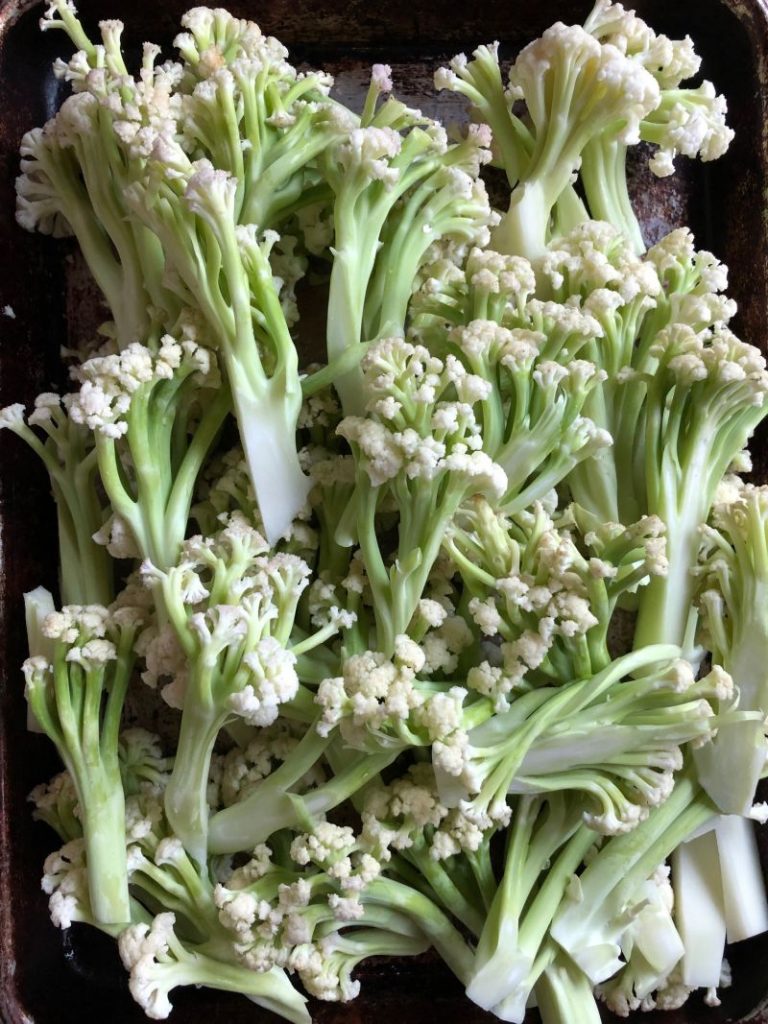
If you’re a gardener or farmer, the non-GMO seeds are available at Burpee, Thompson and Morgan (U.K.) and Rare and Exotic Seeds. Melissa’s Produce sells trimmed flowering cauliflower as Fioretto.
What’s interesting is how flowering cauliflower has little white flower buds (think teeny tiny florets) that do not grow tightly like regular cauliflower. The leaves are slender and tender soft, rather than hard and thick like standard cauliflower. The stems, even raw, have delicate green color that’s strikingly beautiful.
In raw form, flowering cauliflower has a sweet flavor that’s not as pungent as the common heads. With all the little flower buds that lay separate, I suppose you can easily turn flowering cauliflower into cauliflower rice. I treated like broccoli and used it for a flowering cauliflower stir-fry. Simple vegetable stir-fries are a fast way to gauge how a fresh vegetable expresses its flavors and textures.
A Hot Pan and Lid Help
I used a cast iron wok on my biggest burner, but if you have another kind of large pan that will heat up hot (such as stainless steel, carbon steel, or cast iron), use it! Make sure you have a lid because I splash some water in to coax cooking to a tender crisp.
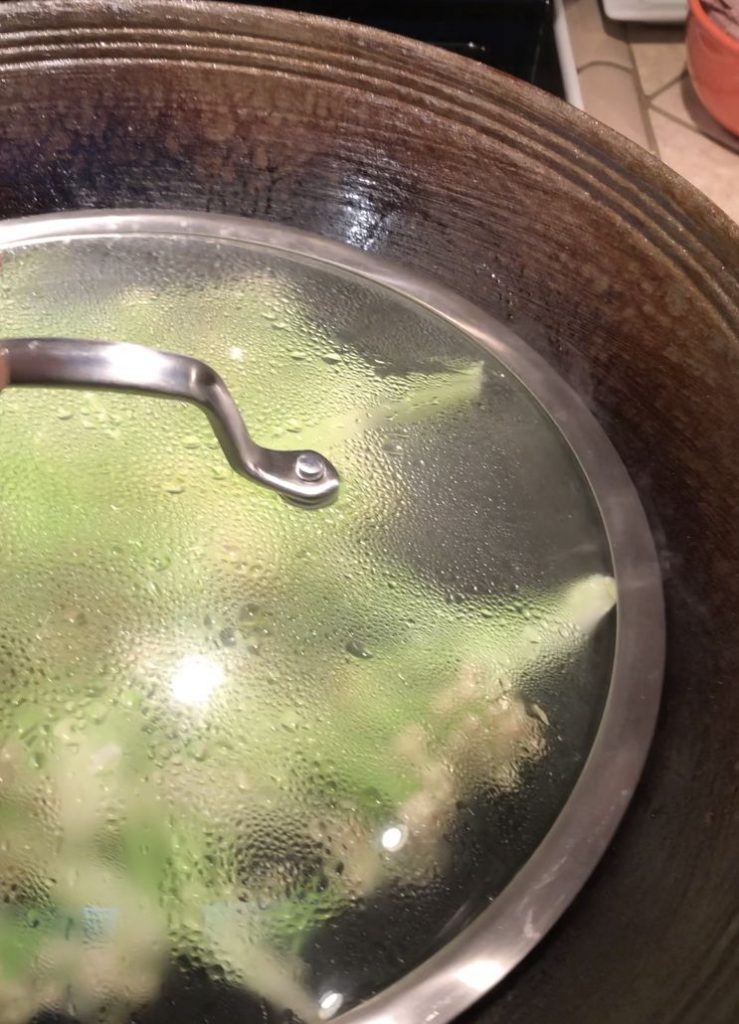
The flowering cauliflower was seasoned simply with sea salt and a swirl of sesame oil at the end. I used a neutral oil to get things started.c
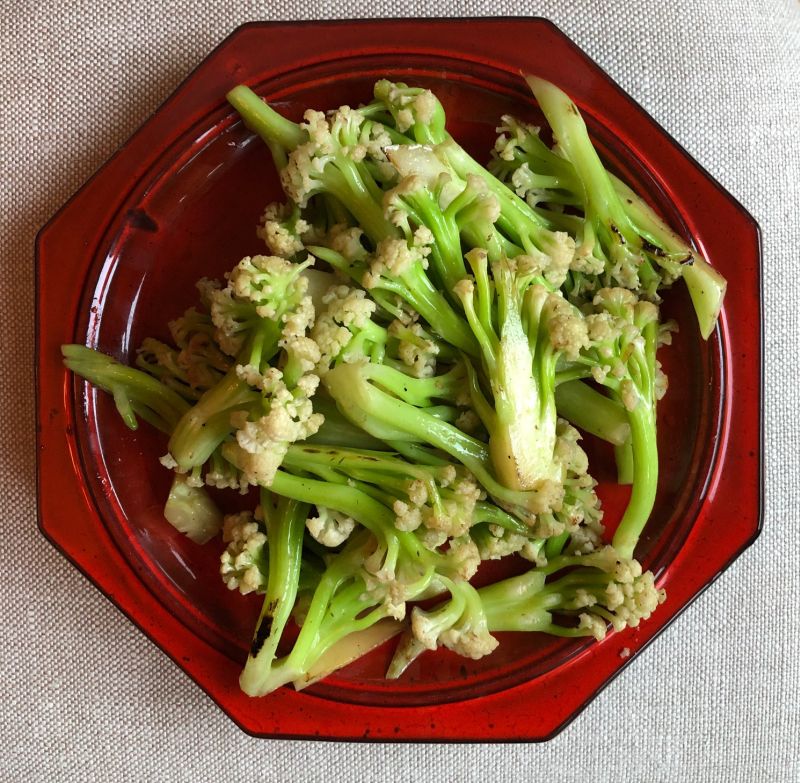
The stir-fried flowering cauliflower was shockingly beautiful, mild and sweet tasting. It also picked up a little bit of charred goodness, too. Thus far, it seems like a cool weather crop. I just got some in Northern California so you may see it elsewhere. When you spot this new vegetable, try it!
Flowering Cauliflower Stir-Fry
Ingredients
- 1 ⅓ pounds flowering cauliflower
- 1 ½ to 2 tablespoons neutral oil such as canola
- Fine sea salt or kosher salt
- ⅓ cup water or lightly salted chicken broth plus more as needed
- 1 teaspoon sesame or unrefined peanut oil
Instructions
- Slice off a bit from the dry stem ends, then separate the cauliflower into slender, chopstickable pieces. If some are too long to be bite size, cut some of the stem but keep them to stir-fry! If there are tough seeming stem parts (bite one to see), cut off the tough outer skin. You should net about 1 ¼ pounds, or roughly 4 cups.
- Heat a large wok or skillet over high heat. Add the oil and swirl to coat. When shimmering and hot, add the flowering cauliflower and sprinkle in salt to season. Stir and flip with enthusiasm for 1 to 2 minutes, until glossy and glowing.
- Pour in the water, stir, then cover. Lower the heat slightly and cook for about 3 minutes, uncovering and stirring occasionally. When the cauliflower is just tender crisp, uncover. If there is water left in the pan, allow it to vigorously boil off. If there’s no water left and the cauliflower is firm, add a splash of water and replace the lid.
- When you’re satisfied with the cauliflower’s doneness, pour in the sesame oil and stir to combine. Turn off the heat. Taste and add extra salt as needed. Transfer to a plate and serve.













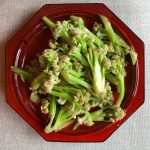




Tu Nguyen says
A young Vietnamese vendor at the Farmers Market University Irvine on Saturday has been selling this for years(2013-ish). He told me to use it the same as regular cauliflower in the classic VN saute with precooked slice pork belly and shrimp with a touch of Oyster sauce, fish sauce and whit pepper. Delicious!!!!!!
Andrea Nguyen says
That's so cool. It would work for the beef and cauliflower too!!! Thanks for the intel.
Lisa P says
My husband was not enamored of these (and he’s far from
picky) but I loved it! Could have eaten the whole batch.
Andrea Nguyen says
Hooray! You get the batch to yourself. It's an unusual vegetable.